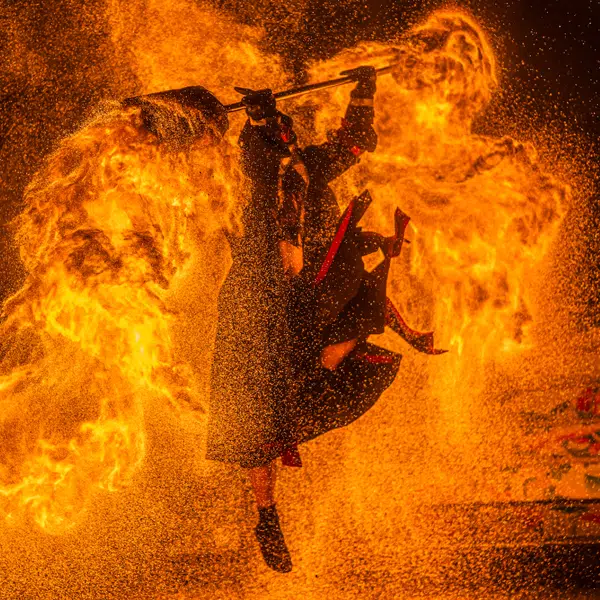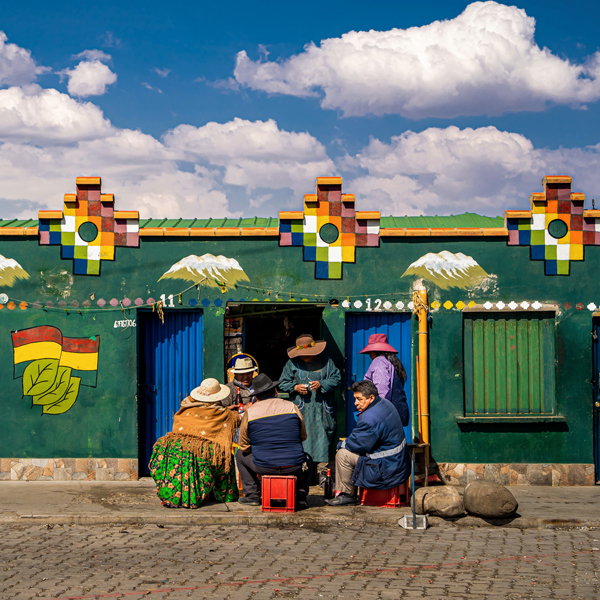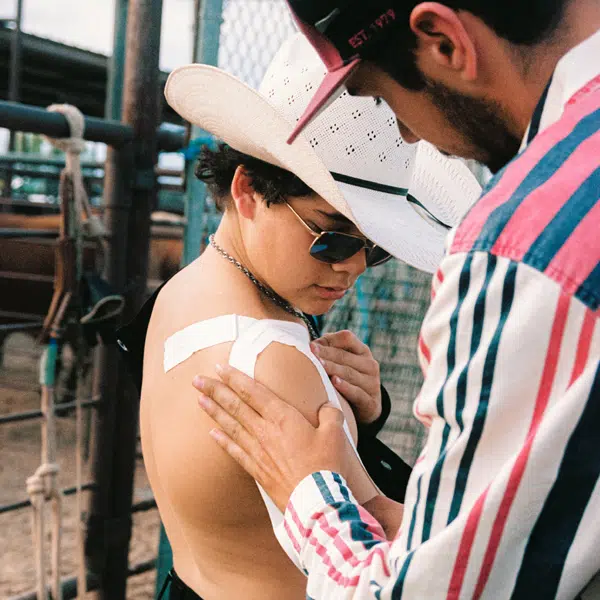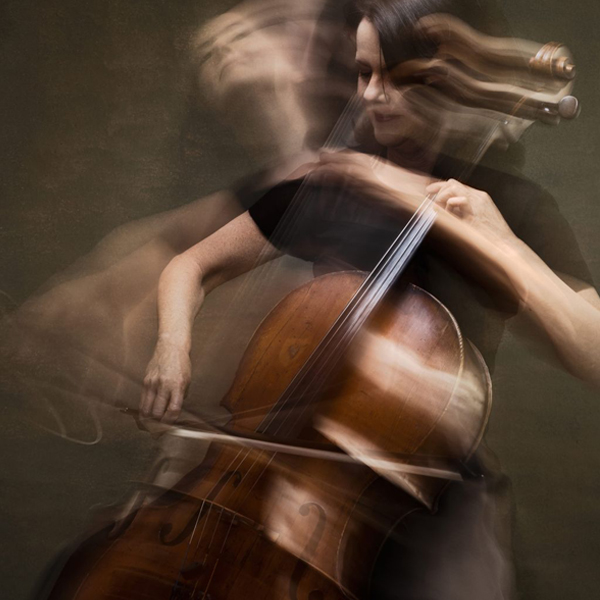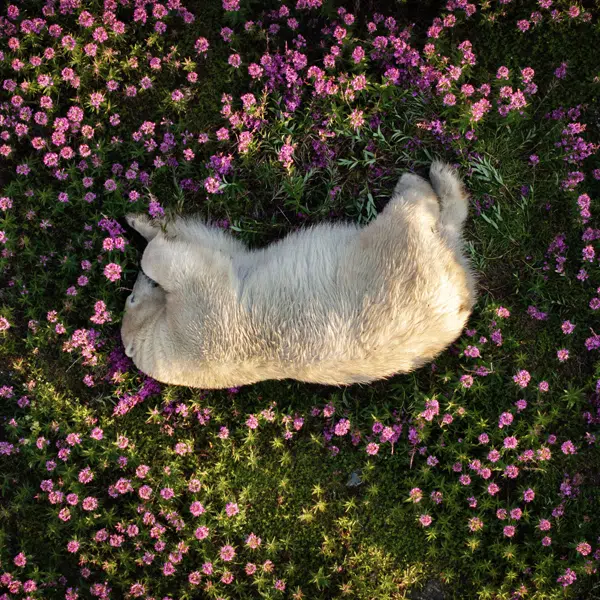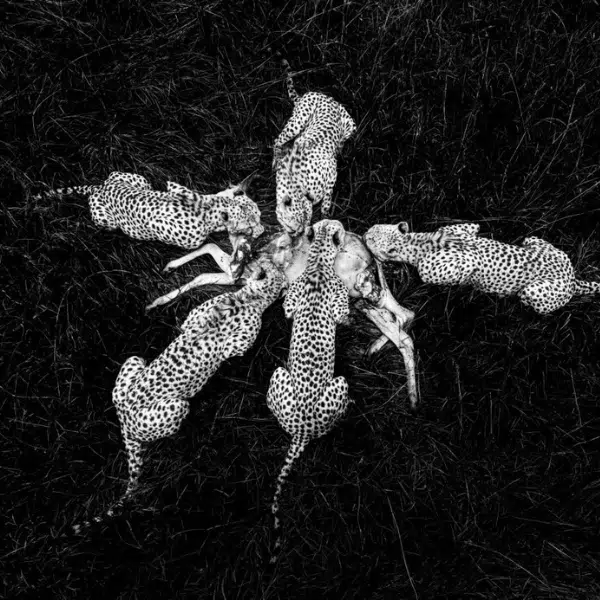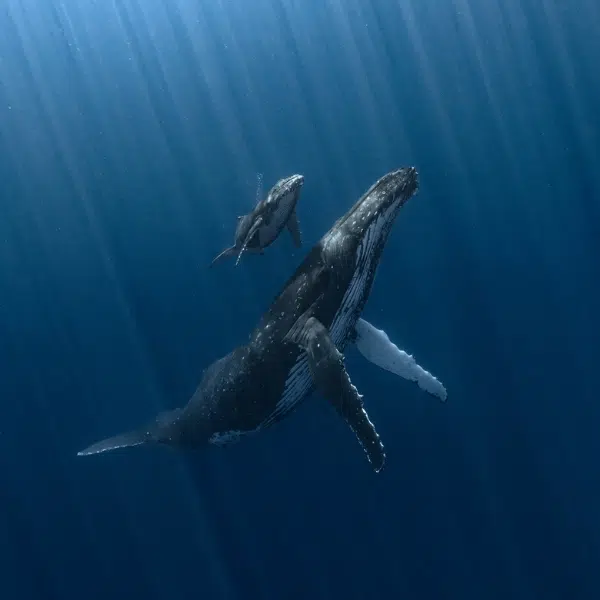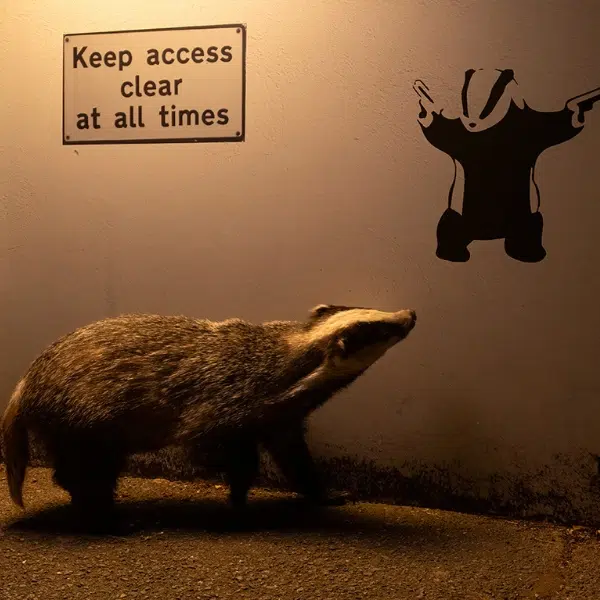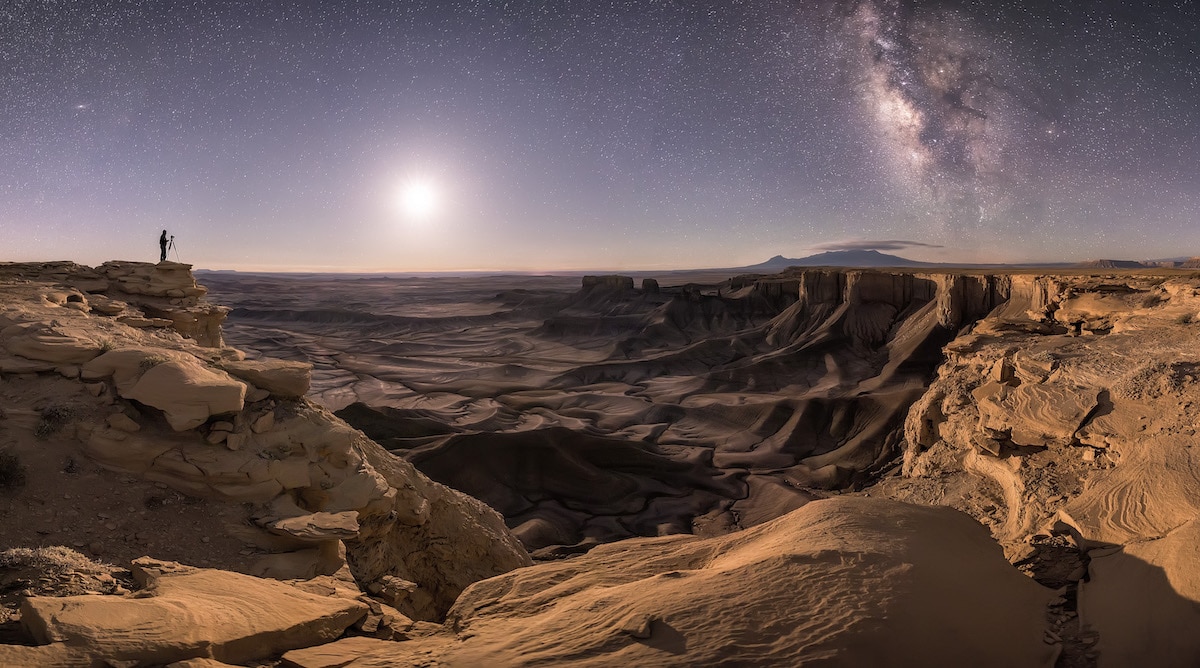
“Transport the Soul” by Brad Goldpaint (USA). Overall Winner and Winner, People and Space.
Interested in adding a ‘human element' to his photographs, once the quarter moon rose and revealed the incredible, vast landscape of the shale hills below the viewpoint, the lone photographer, to the left of the frame, stood motionless while he captured this photograph. The Andromeda Galaxy, quarter moon, Milky Way Galaxy, and position of the photographer all combined to create a captivating, harmonious portrait of a night sky photographer at work. Moab, Utah, USA, 20 May 2017. Nikon D810 camera, 14-mm f/4.0 lens, ISO 2500, 20-second exposure.
A majestic image of the Milky Way setting red rock formations in Utah aglow took top prize at the tenth annual Insight Investment Astronomy Photographer of the Year contest. Beating out 133 other shortlisted images, the photo is a victory for American astrophotographer Brad Goldpaint. From solar eclipses and glimpses of far-off galaxies to the Aurora borealis and falling comets, the beauty of astronomy was on full display in this year's competitions.
Run by the Royal Greenwich Observatory, the photography contest asks amateur and professional astrophotographers from around the world to submit their best work. The 2018 competition received over 4,000 entries from 91 countries and narrowing the field to 31 category winners was no easy task. But in the end, it was Goldpaint's cinematic photo that captured the attention of the judges.
“For me, this superb image is emblematic of everything it means to be an astrophotographer; the balance between light and dark, the contrasting textures and tones of land and sky and the photographer alone under a starry canopy of breathtaking scale and beauty,” shared competition judge Will Gater.
Young photographers were also honored, with 15-year-old Fabian Dalpiaz winning for his incredible photo of meteors passing over the Dolomite Mountains in Italy. His win also proves you don't have to travel far to take an award-winning photo—Dalpiaz's was shot close to his house one morning before he went to take an exam at school.
All of the winning and shortlisted photographs are on display at the National Maritime Museum until May 5, 2019. The exhibition also highlights the best photos from the past ten years of competition. The official Astronomy Photographer of the Year book is also available for £25 ($32). The annual publication includes all 134 winning and shortlisted photos, as well highlights from previous years.
Enjoy more winning images from the 2018 Astronomy Photographer of the Year contest.
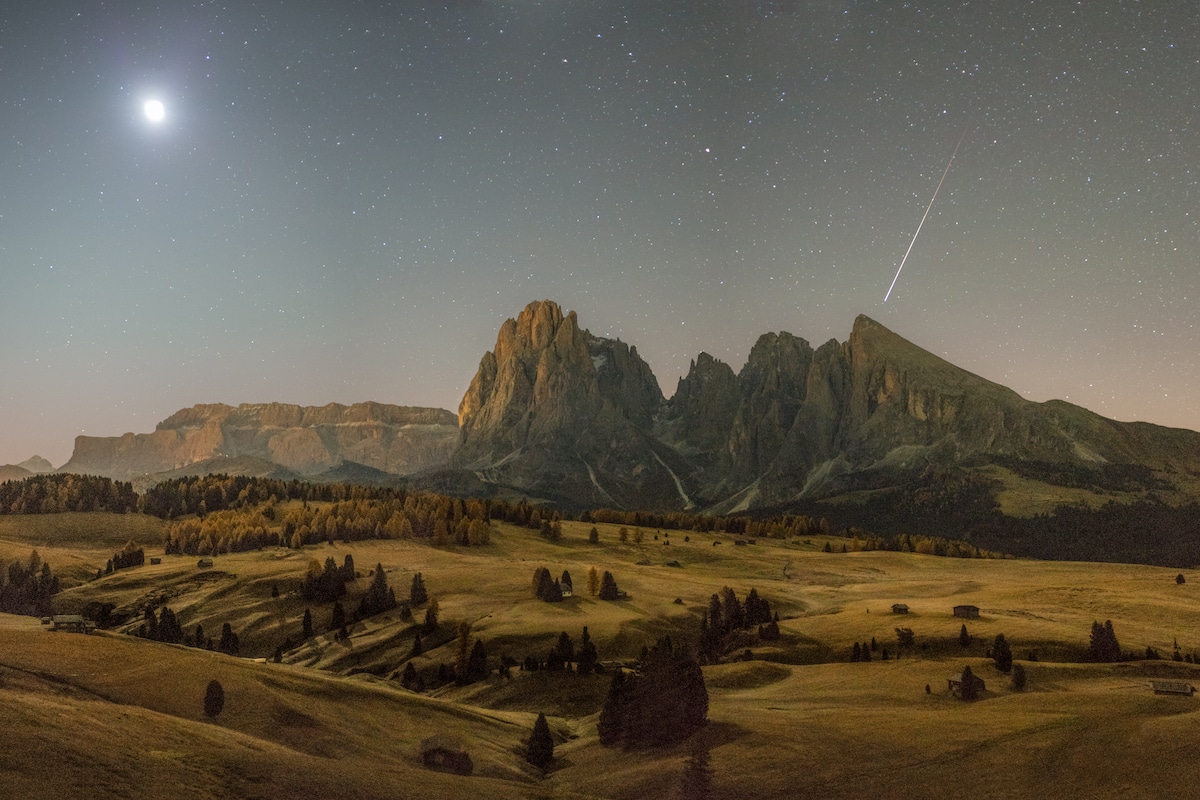
“Great Autumn Morning” by Fabian Dalpiaz (Italy – aged 15). Winner, Young Astronomy Photographer of the Year.
On an early Monday morning before taking an exam at school, the photographer decided to go out and take some images. Shooting on a 50mm lens the photographer got lucky and captured this incredible photograph of a meteor passing over the Dolomites. On the left side of the image the Moon is shining over the stunning landscape of the Alpe di Siusi with the autumn colors on the was illuminated only at 13.5 percent. Alpe di Siusi, Dolomites, South Tyrol, Italy, 16 October 2017. Canon EOS 5D Mark III camera, 50-mm panorama f/2.0 lens, ISO 6400, 8-second exposure.

“Corona Australis Dust Complex” by Mario Cogo (Italy). Winner, Star and Nebulae.
Under the dark Namibian sky, the photographer set his camera to a six-hour exposure in order to capture the CrA Molecular Complex, a large, dark and irregular area in the northern part of Corona Australis where we can see reflection nebulas NGC 6726-27-29, dark dust cloud Bernes 157, globular cluster NGC 6723 and other objects. Interestingly, there is a huge difference in distance: under 500 light years for the dust complex and 30,000 light years for the globular cluster.
Tivoli Southern Sky Guest Farm, Namibia, 18 August 2017. Takahashi FSQ 106 ED telescope, Astro-Physics 1200 GTO mount, Canon EOS 6D Cooling CDS Mod camera, 530-mm f/5 lens, ISO 1600, total 6-hours exposure.
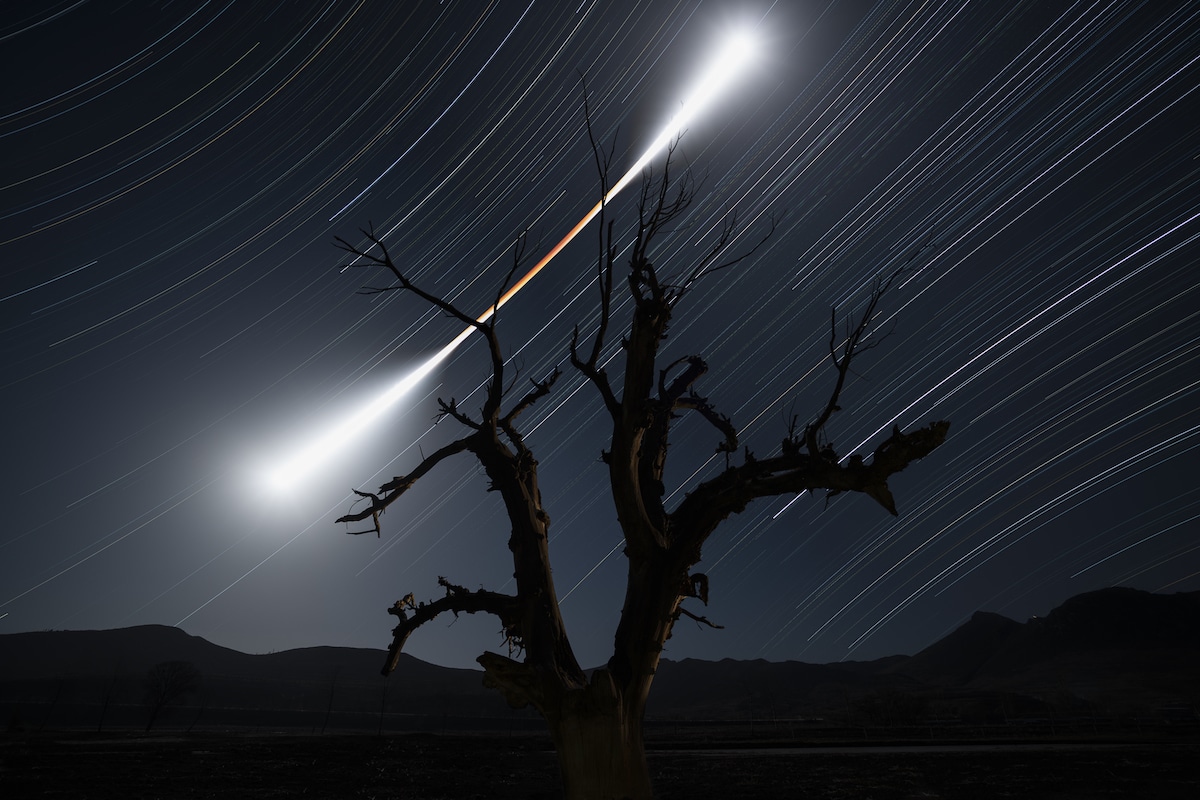
“Eclipsed Moon Trail” by Chuanjin Su (China). Runner-Up, Skyscapes.
On 31 January 2018, a spectacular total lunar eclipse occurred. The photographer set his camera for a four-hour stack exposure and after he took about one thousand images, he finally captured an image that reflects the changes of the Moon's color and brightness before, during and after the eclipse. The picture reminded the photographer of the Compliant Golden-Hooped Rod, which is the weapon of the Monkey King, who is described in ancient Chinese literature.
Zhangjiakou, Hebei Province, China, 31 January 2018. Sony ILCE-7RM2 camera, 17-mm f/4 lens, ISO 100, 950 x 15-seconds.
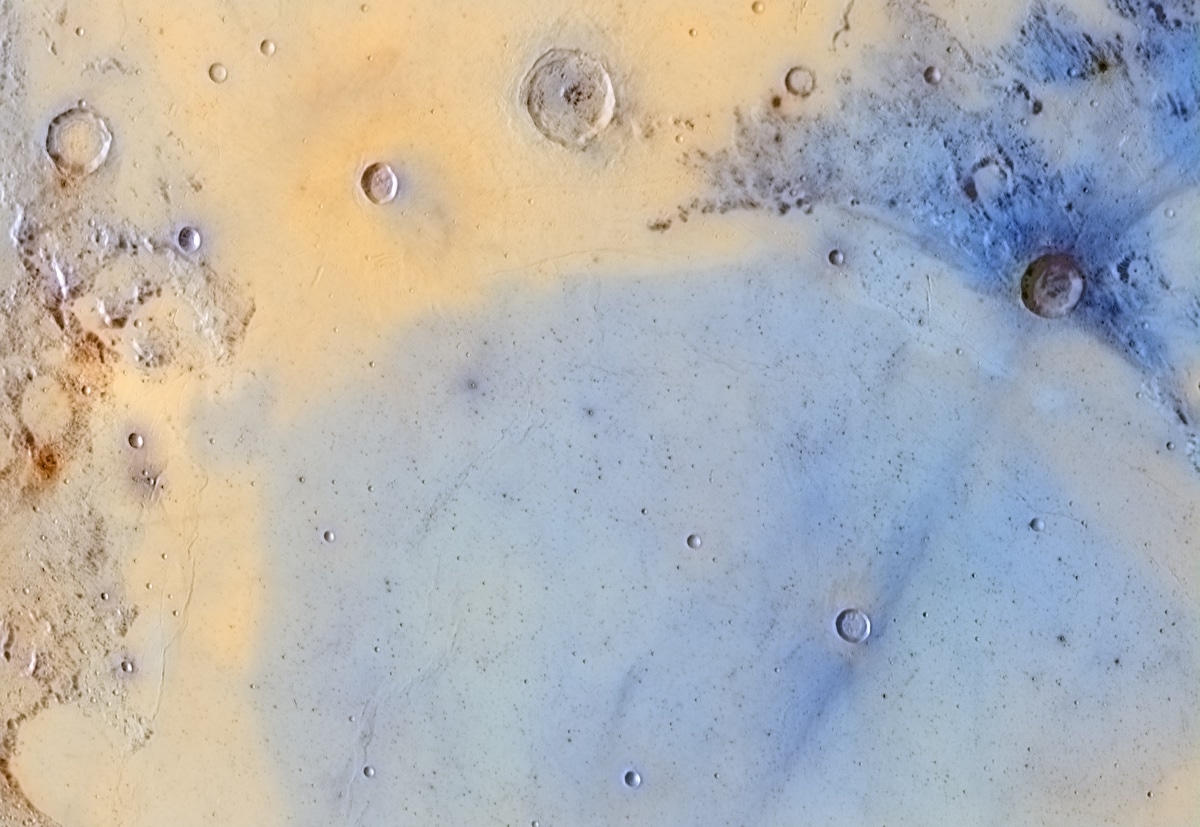
“Inverted Colors of the boundary between Mare Serenitatis and Mare Tranquilitatis” by Jordi Delpeix Borrell (Spain). Winner, Our Moon.
Inverting the image is a legacy of deep sky imaging, where tenuous extensions of galaxies and nebulae can be more visible on a negative image because our eye more easily detects tenuous dark details on a white background. This is also useful in Moon imaging helping to reveal otherwise barely detectable soil features such as ray systems. Low contrast areas like the lunar seas and ray systems, look much more interesting because low contrast details are revealed and according to the photographer this is a new way for Moon exploration that should be considered. L' Ametlla del Vallès, Barcelona, Spain, 6 December 2017. Celestron 14 telescope, Sky-Watcher NEQ6 Pro mount, ZWO ASI 224MC camera, 4,200-mm f/12 lens, multiple 20ms exposures.
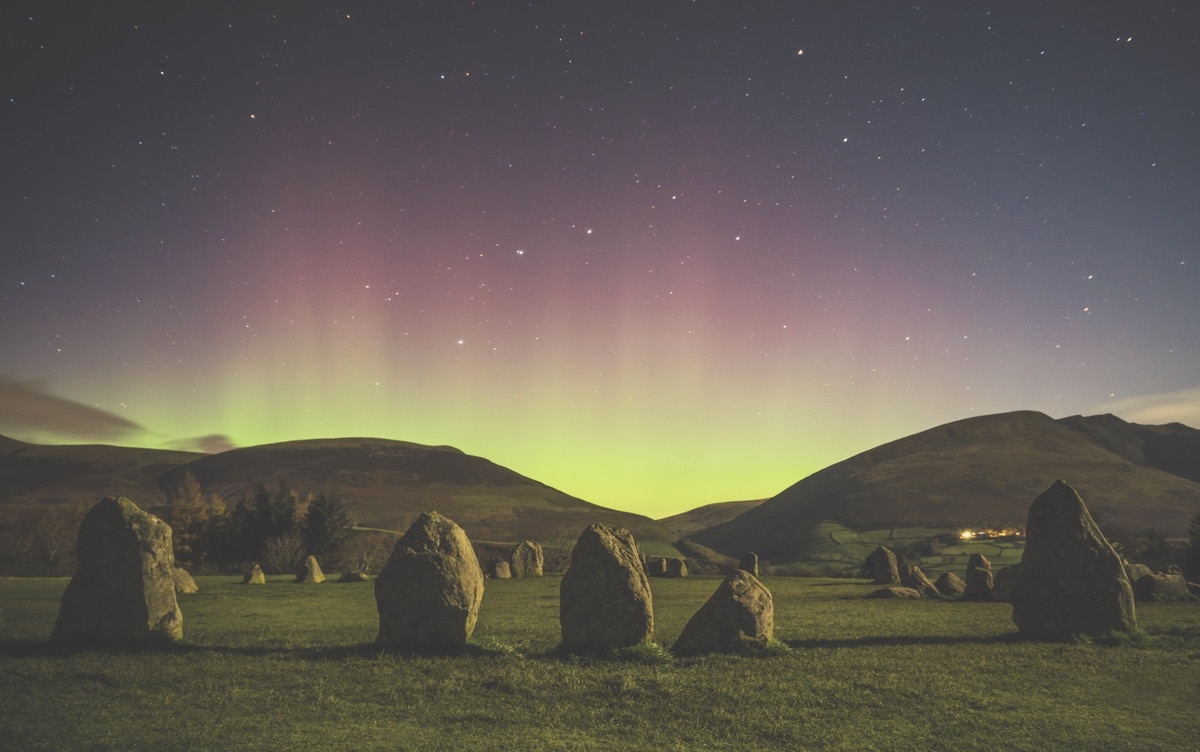
“Castlerigg Stone Circle” by Matthew James Turner (UK). Runner-Up, Aurorae. This was the photographer’s first ever encounter with the aurora borealis in the UK. The Moon was bright enough to illuminate the foreground arena of standing stones perfectly and the aurora surfaced from behind the majestic mountains, giving the appearance that the hills themselves were emitting the ethereal green glow.
Keswick, Cumbria, UK, 7 November 2017. Sony ILCE-7R camera, 22-mm f/4 lens, ISO 1000, 30-second exposure.
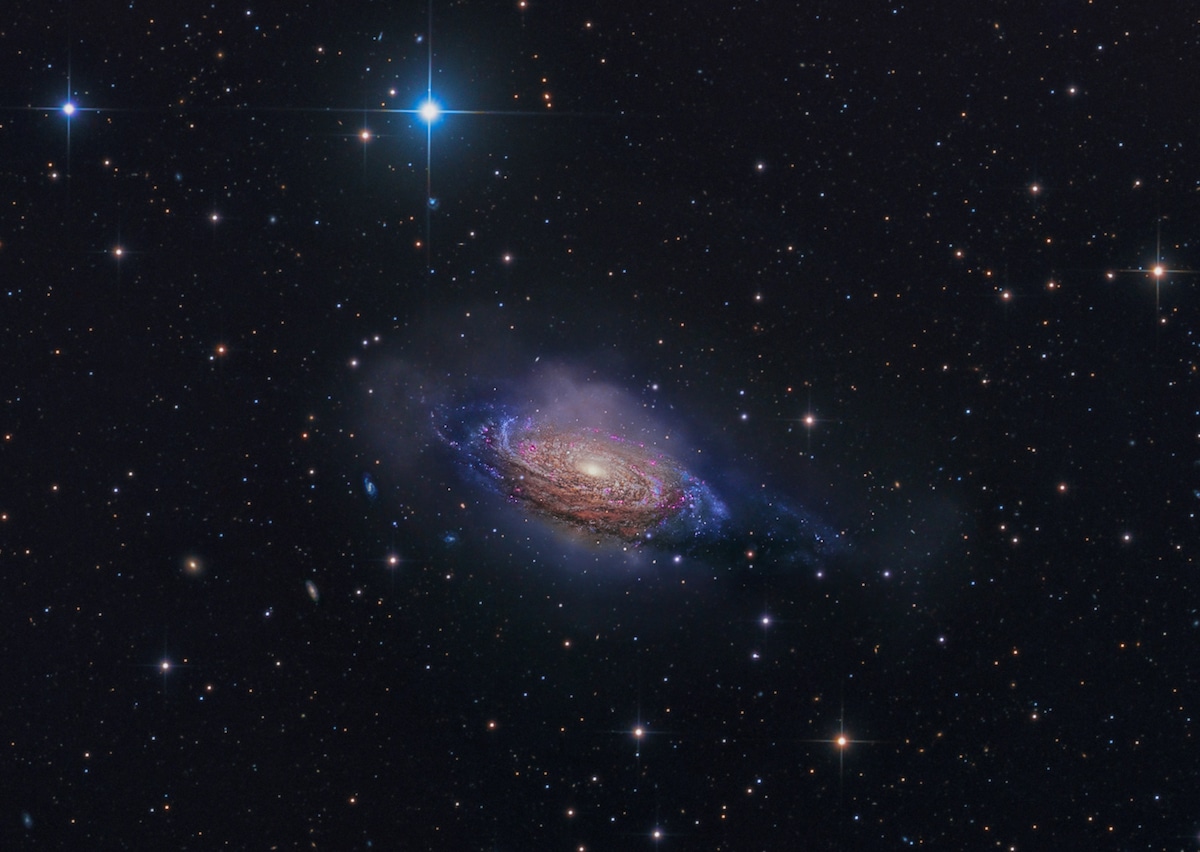
“NGC 3521, Mysterious Galaxy” by Steven Mohr (Australia). Winner, Galaxies.
The spiral galaxy NGC 3521 is located around 26 million light-years away in the constellation Leo and presents complex scene, with enormous amounts of surrounding dust and stray stars glowing far out from its disk. Emerging from the photographer’s color data was a bright array of contrasting color tones, generated by aging yellow-red stars, younger burning aggressively blue-white stars, and various nebulae throughout the disk. This image comprises approximately 20.5 hours of exposure time, collecting data in various filter types.
Carrapooee, Victoria, Australia, 13 February 2018. Planewave CDK 12.5 telescope, Astrodon Gen II LRGB, Baarder Hα lens at 2541 mm f/8, Astro Physics 900 mount, SBIG STXL-11000 camera, Luminance: 33 x 1200 seconds [11hrs], Hα: 12 x 1200 seconds [4hrs], Red-Green-Blue: 450 x 12–18 seconds.

“Parade of the Planets” by Martin Lewis (UK). Runner-up, Planets, Comets, and Asteroids.
During the course of just one year the photographer managed to image surface details on every planet in our Solar System from his own back garden. At the start of the year, the photographer had captured distant Mars, eight months after opposition, sporting a tiny polar cap and dark features. Later on, he captured Venus, then Jupiter and Saturn. In September, the photographer had imaged details on the rocky face of Mercury for the first time and in November he recorded Uranus's distinct polar region, making the set complete. The more challenging planets, Mercury, Uranus and Neptune, required IR (infrared) imaging to bring out surface details and have been colourised to match their more normal visual appearance. All images are displayed at the same relative size that they would appear through a telescope. St Albans, Hertfordshire, UK, 1 November 2017 Home-built 444-mm Dobsonian Newtonian reflector telescope (Mercury used 222-mm Dobsonian), various IR filters for Uranus, Neptune, Mercury, Saturn (L). UV filter for Venus, home-built Equatorial Platform, ZWO ASI174MC/ASI174MM/ ASI290MM camera, various focal lengths f/12 to f/36, various exposures.
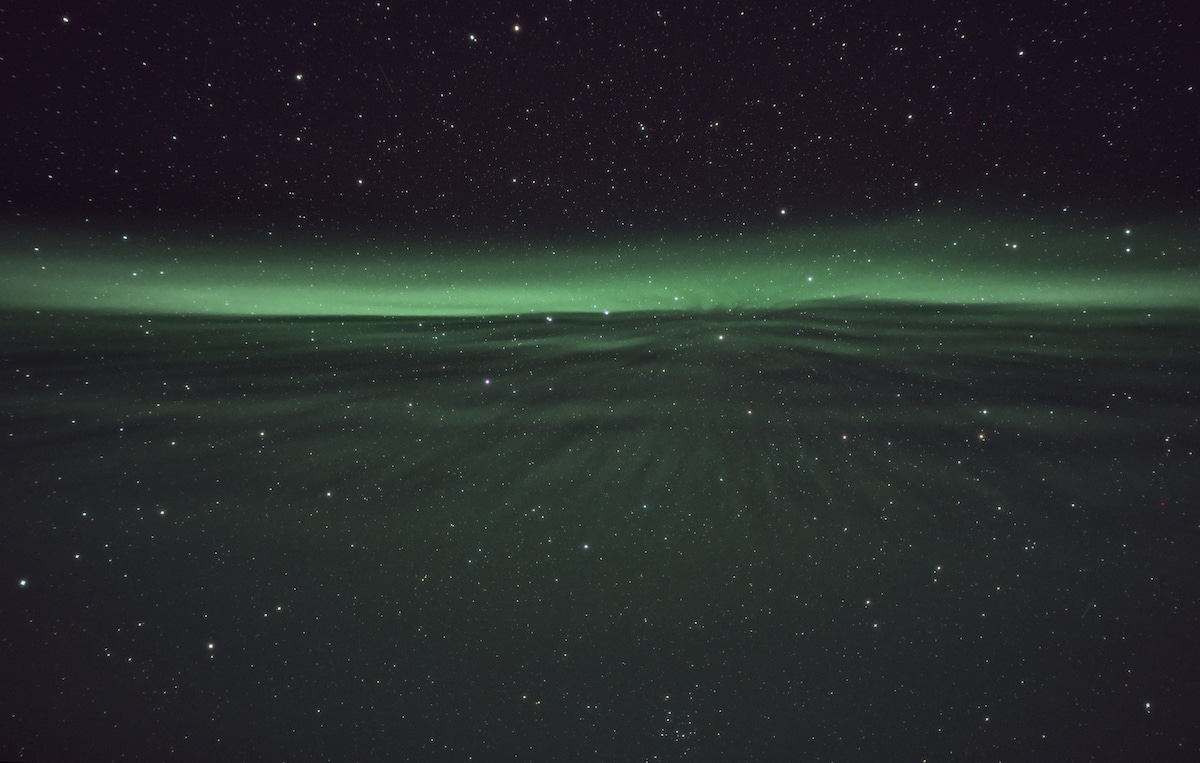
“Speeding on the Aurora lane” by Nicolas Lefaudeux (France). Winner, Aurorae.
A hazy, subtle auroral band is leisurely drifting across the sky providing an unusual perspective with faint bands appearing to radiate from a vanishing point, like a road disappearing over the horizon. As the aurora glided overhead, it made the photographer feel like he was driving a spaceship about to reach light speed toward the Big Dipper. This view lasted less than a minute.
Sirkka, Finland, 30 March 2017. Sony ILCE-7S2 camera, 20-mm f/1.4 lens, ISO 2000, 3.2-second exposure.
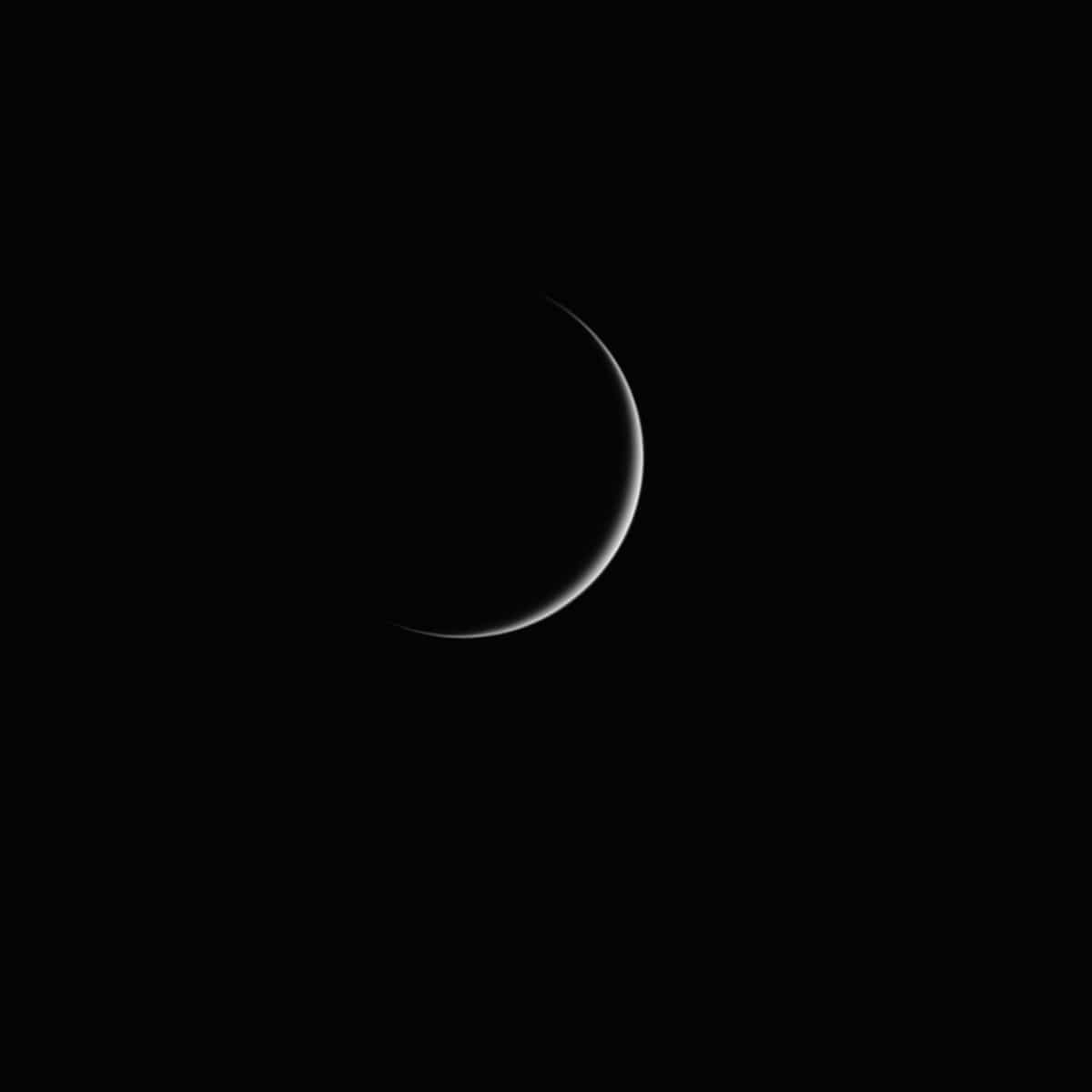
“The Grace of Venus” by Martin Lewis (UK). Winner, Planets, Comets, and Asteroids.
Shortly before sunset, a slender and graceful Venus hangs low in the western sky, just 10 days before meeting the Sun at inferior conjunction. This is an infra-red image of that view, taken using a monochrome digital video camera mounted on a reflector telescope. The recording was processed to remove the blurring effects of our atmosphere and combine the video frames to create a single still image of the planet. The infra-red filter used on the camera helps steady the effects of atmospheric movement.
St Albans, Hertfordshire, UK, 15 March 2017. Home-built 444-mm Dobsonian reflecting telescope, Astronomik 807nm IR filter, Home-built Equatorial tracking platform, ZWO ASI174MM camera, 12.4-m f/28 lens, 6msec frame time, 5.3sec total exposure duration.

“Two Comets with the Pleiades” by Damian Peach (UK). Winner, Robotic Scope.
The image showcases a very rare conjunction of two bright comets both passing the famous Pleiades star cluster in Taurus at the same time. Comet C/2017 O1 (ASASSN) is at far left while C2015 ER61 (PanSTARRS) is in the centre. Both comets have strikingly different appearances. The whole region is embedded in the faint nebulosity of the Taurus Molecular Cloud. The photographer used a remote telescope located in Mayhill, New Mexico.
Remote Astronomical Society (RAS) Observatory, Mayhill, New Mexico, USA, 19 September 2017. Takahashi FSQ106 telescope at 106 mm, Paramount ME mount, SBIG STL-11000M camera, 530-mm f/5 lens, exposure: four LRGB frames, each frame 30 minutes each.
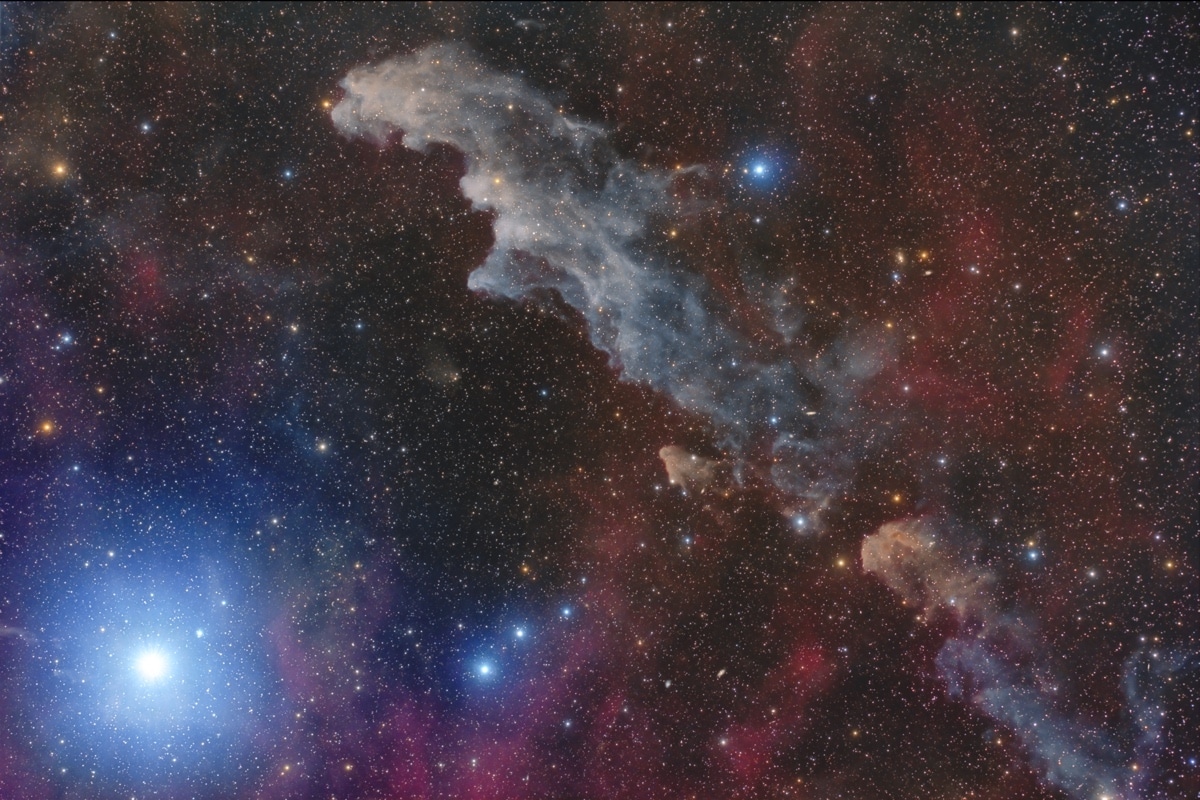
“Rigel and the Witch Head Nebula” by Mario Cogo (Italy). Runner-Up, Stars and Nebulae.
The dark Namibian sky was the perfect location to capture the wonder of the Witch Head Nebula and Rigel. The Witch Head Nebula is a very faint molecular gas cloud which is illuminated by supergiant star Rigel, the seventh brightest star of the sky and the brightest star in the constellation of Orion. Tivoli Southern Sky Guest Farm, Namibia, 20 August 2017. Takahashi FSQ 106 ED telescope, Astro-Physics 1200 GTO mount, Canon EOS 6D Cooling CDS Mod camera, 383-mm f/3.6 lens, ISO 1600, 1, 3 and 6 min, total 5 Hours exposure.
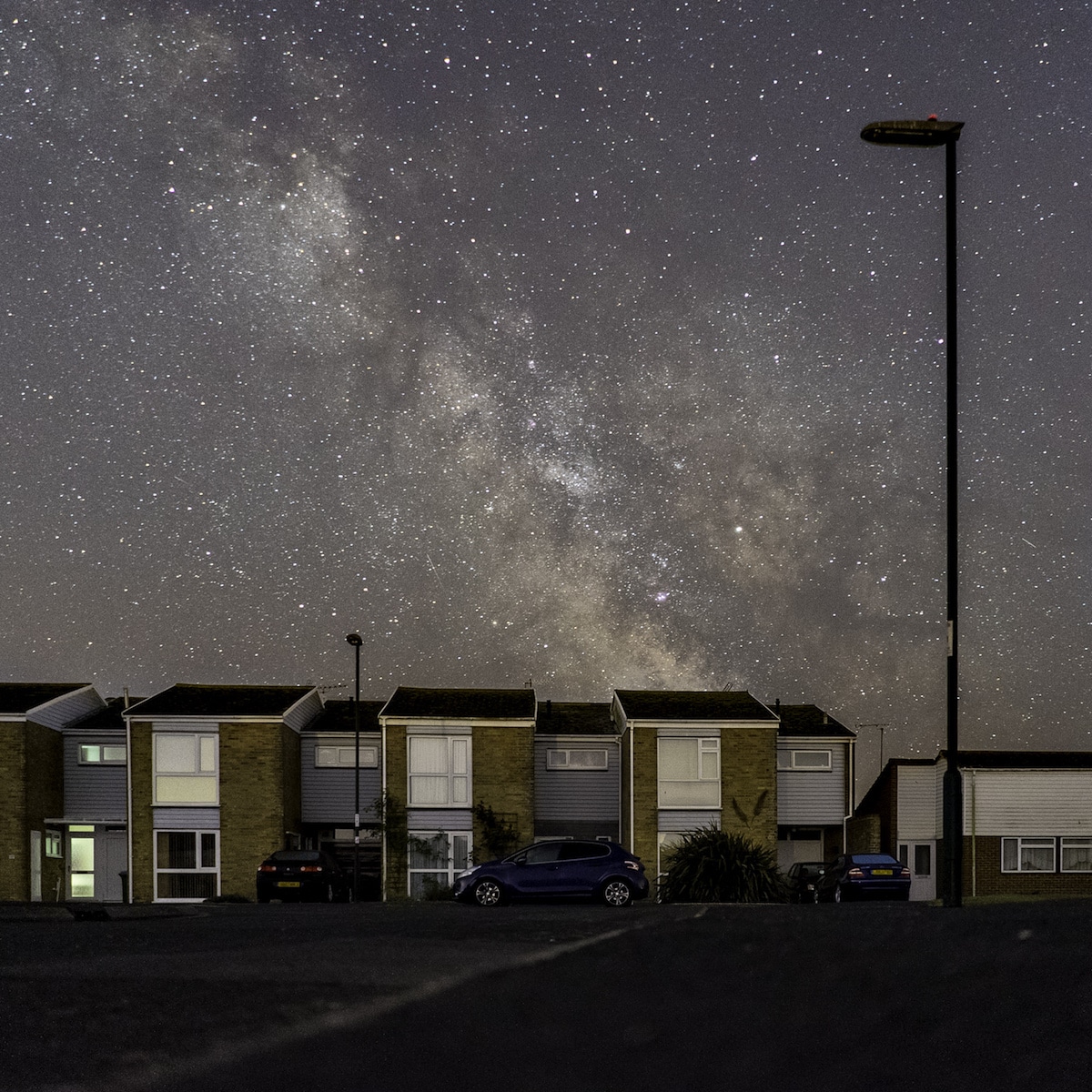
“Living Space” by Andrew Whyte (UK). Runner-Up, People and Space.
This is a single-frame image and not a speculative composite. Situated on a south-coast peninsula, this street falls within a part-night street lighting zone; when the lights go out, there's nothing to interfere with the view of the stars until continental Europe- miles across the English Channel. The scene might be perceived incongruous or surreal and almost shows how accustomed we've become to the loss of night sky views due to light pollution. It was a conscious decision by the photographer to feature the unlit street lamps, hinting how it might be possible to undo the damage and restore awe-inspiring views. Pagham, West Sussex, UK, 29 April 2017. Sony ILCE-7S camera, 28-mm f/2 lens, ISO 6400, 15-second exposure.
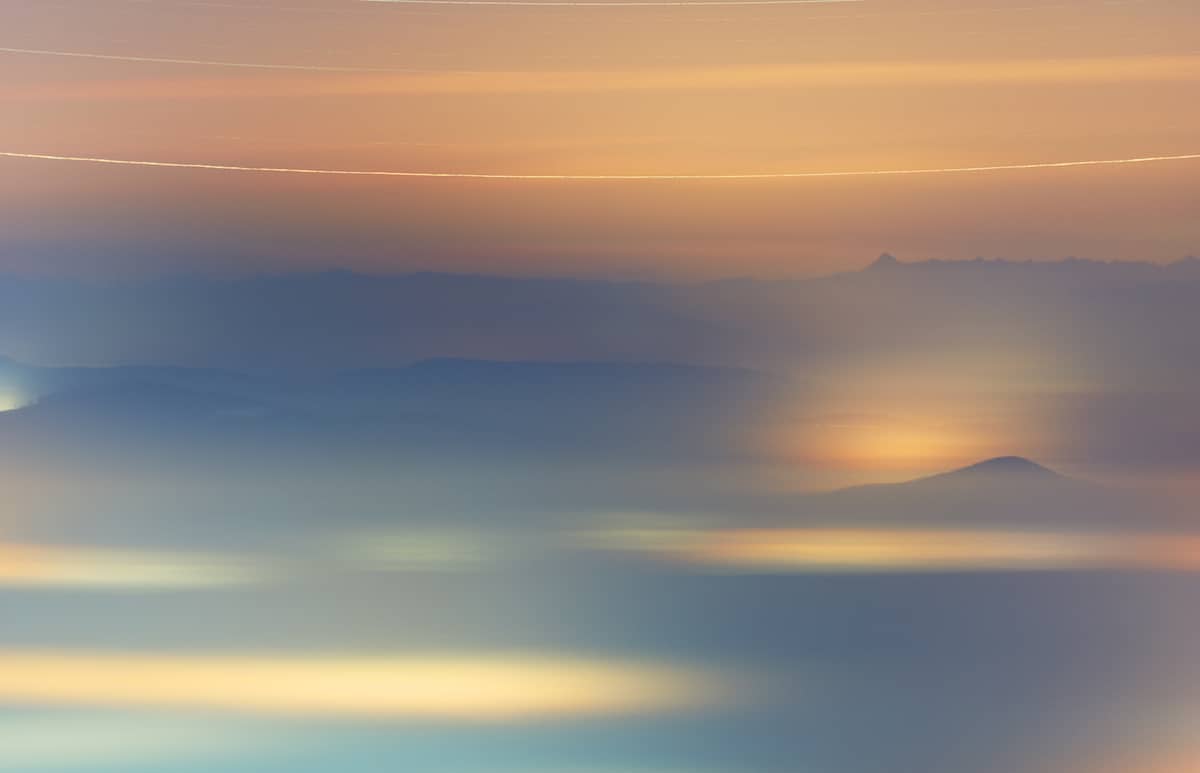
“Circumpolar” by Ferenc Szémár (Hungary). Winner, Skyscapes.
The cold winter weather weaves a transparent blanket above the human settlements. If one rises above this coherent surface of mist, the colorful star trails can be brought together with the glowing lights of the cities. This extremely long capture sequence took half of the winter’s nights facing the clear northern sky as the circumpolar star Almach, also known as Gamma Andromedae, just touched the horizon.
Gatyatető, Hungary, 17 February 2018. Minolta 80–200 f/2.8 telescope, tripod, Sony SLT-A99V camera, 135-mm f/2.8 lens, ISO 640, 50 x 300-second exposures.
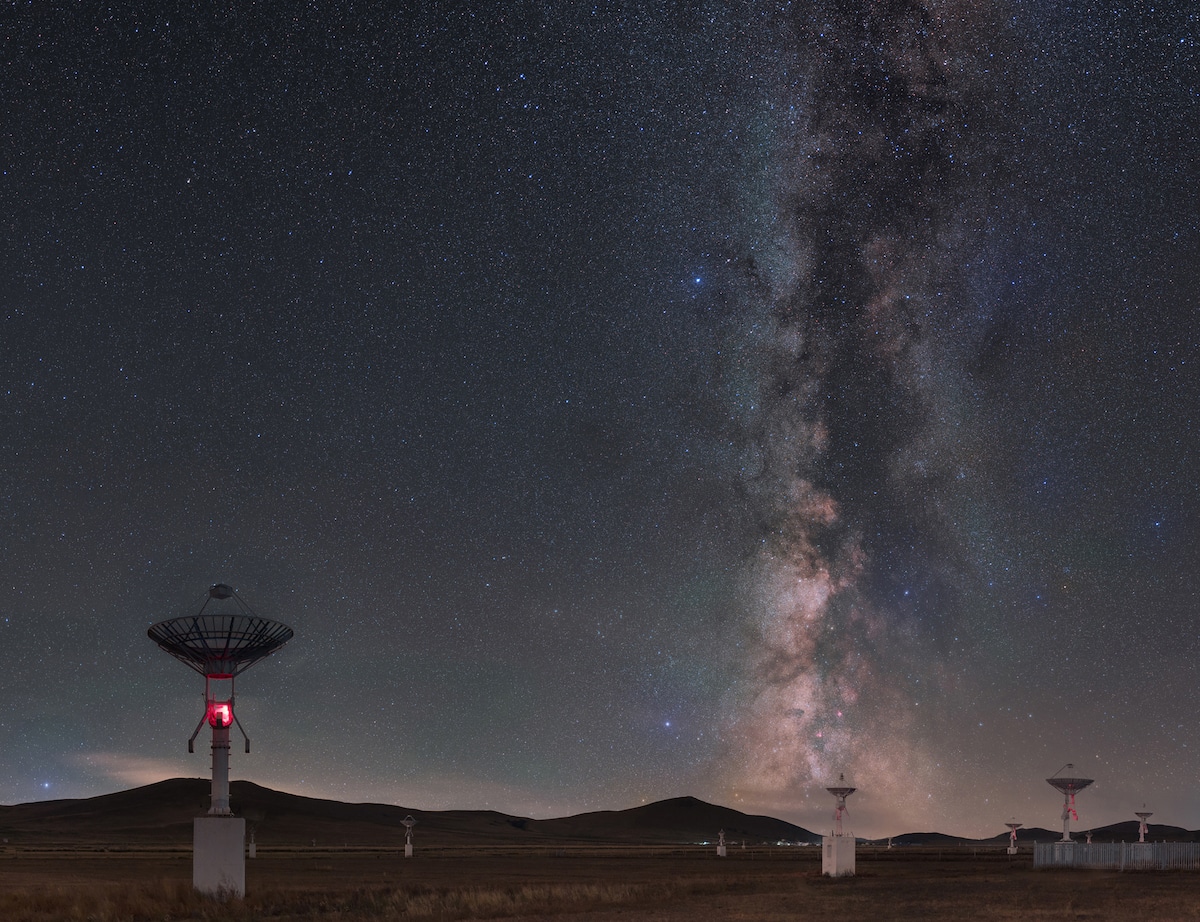
“Galaxy Curtain Call Performance” by Tianhong Li (China). Winner, Sir Patrick Moore Prize for Best Newcomer.
This was the last opportunity in 2017 to see the silver core of the Milky Way before it sunk below the horizon. It was accompanied by the gradual curtain call of Scorpio heralding the upward trend of Orion in the sky. Meanwhile the season of bright shooting stars quietly arrived. The image is stitched together from a total of twenty pictures.
Ming’antu, China, 23 September 2017. Nikon D810A camera, 35-mm f/2 lens; sky: ISO 1250, 16 x 60-second exposures, total 16 pictures; ground: ISO 640, 4 x 120-second exposures, total 4 pictures.
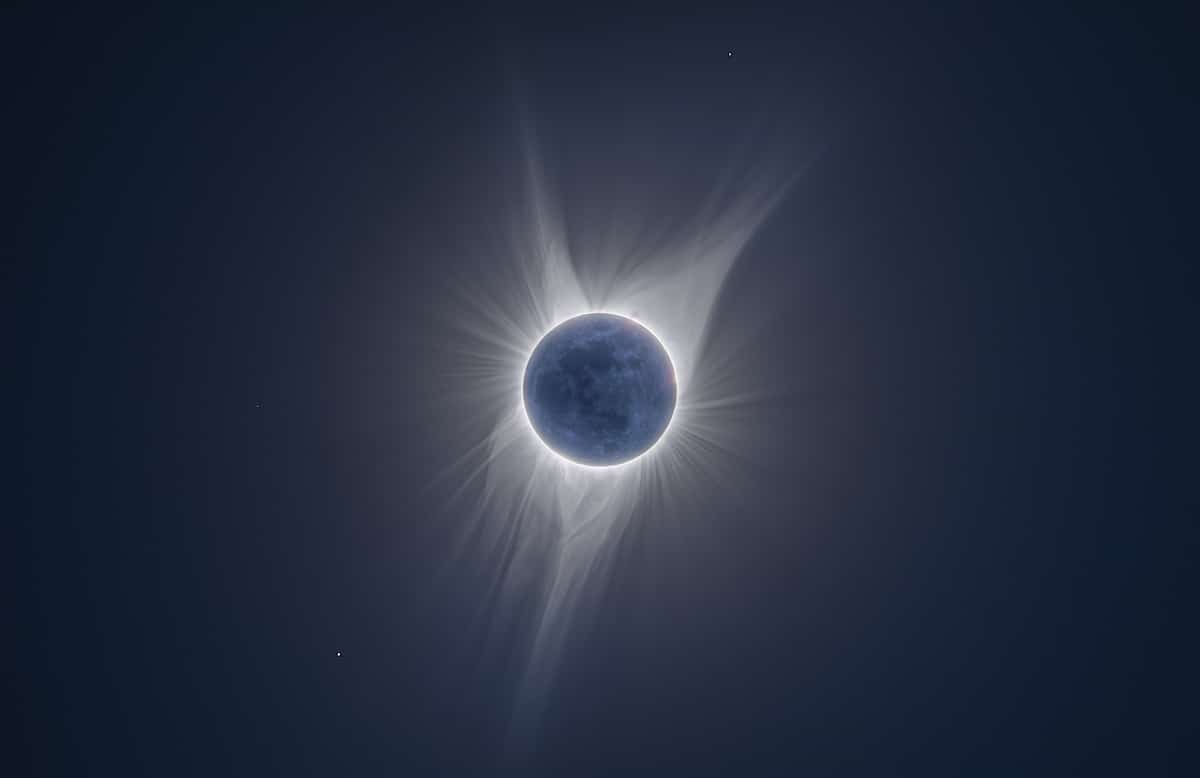
“Earth Shine” by Peter Ward (Australia). Runner-Up, Our Moon.
During a total solar eclipse the brightness of the solar corona hides details of the Moon to the human eye. But by layering multiple digital exposures in this image from 2 seconds to 1/2000th of a second, the photographer managed to reveal much more. The image showcases not just the brilliant solar corona, but the newest possible of new moons, seen here illuminated by sunlight reflecting off the Earth.
Jackson Hole, Wyoming, USA, 21 August 2017. Takahashi FSQ85 telescope, Losmandy Starlapse mount, Canon 5D Mark IV camera, 500-mm f/5 lens, 9 exposures ranging from ISO 100 to 900, 150 2-seconds through to 1/4000th second exposures.
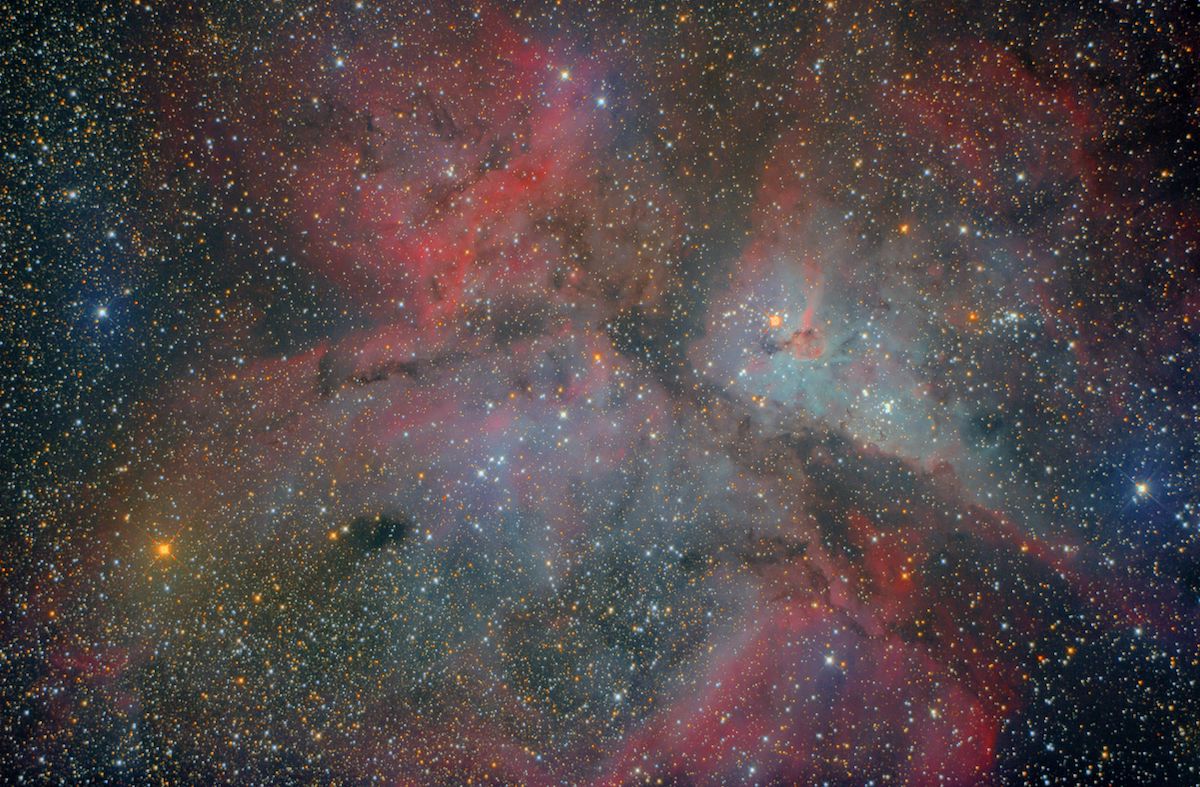
“The Eta Carinae Nebula” by Logan Nicholson (Australia – aged 13). Runner-Up, Young Astronomy Photographer of the Year.
The Eta Carina Nebula, or NGC 3372, is the biggest and brightest nebula in the sky and is located in the constellation Carina. It is mostly made out of hydrogen, created when the bright orange star mid-left went nova, spewing out large amounts of hydrogen gas which now emits light at the Hydrogen-alpha wavelength. The photographer took and stacked multiple shots and processed them in Pixinsight.
Heathcote, Victoria, Australia, 16 December 2017. Takahashi MT-160 telescope, f/4.8 reducer for MT-160, Celestron CGEM mount, Canon EOS 700D camera, 776-mm f/4.8 lens, ISO 800, 12 x 5 minute exposures.
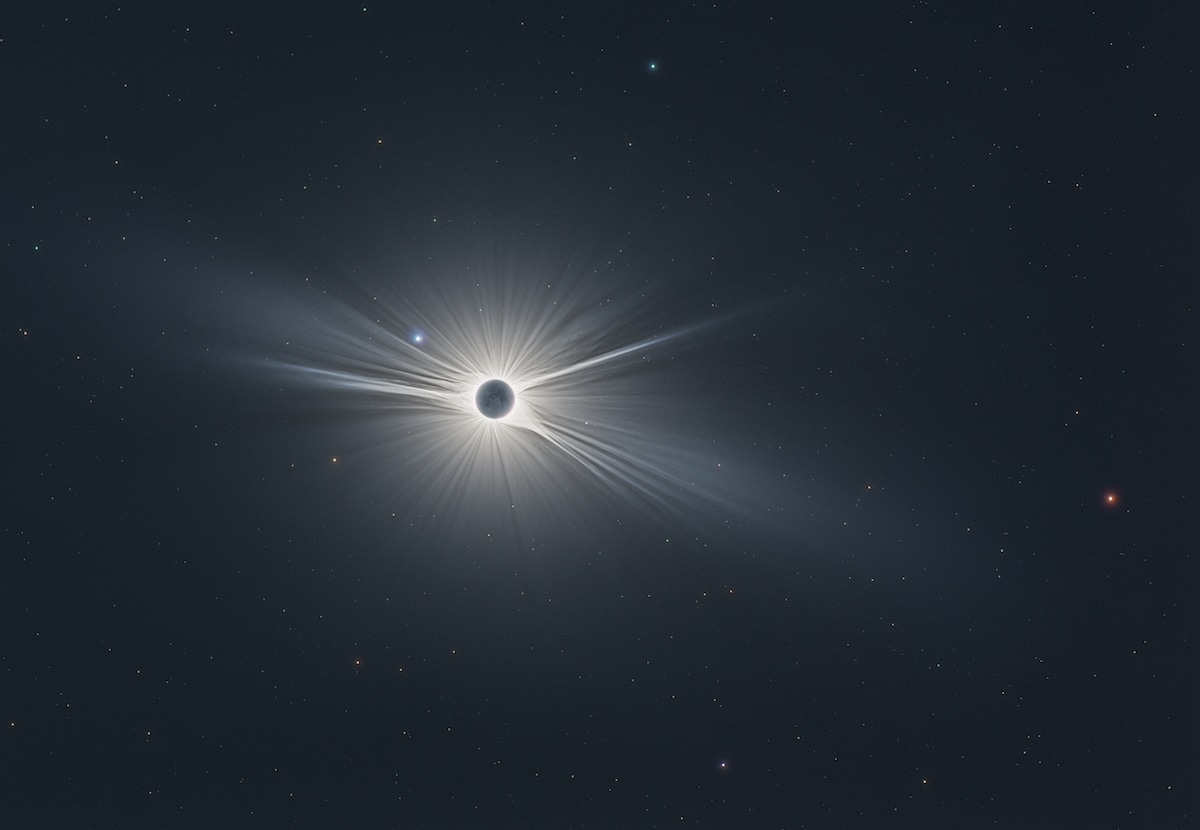
“Sun King, Little King, and God of War” by Nicolas Lefaudeux (France). Winner, Our Sun.
In order to capture this mesmerizing image, the photographer chose the area according to weather forecasts to make sure he would get a clear sky. The image shows the Sun corona in all its glory during the August total solar eclipse. It is flanked on left hand side by the blue star Regulus – the little King – and by the red planet Mars on the right. The many radial streamers of the solar Corona are a real crown for the Sun King and the corona can be traced almost to 30 solar radii distance. The total exposure duration of 100-seconds was recorded in more than 120 individual images and it is a setup consisting of both a fast f/1.4 lens, at full aperture to get as much signal as possible, and a large buffer camera at base ISO to avoid overexposure. The inner corona was recorded using a longer focal length setup.
Unity, Oregon, USA, 21 August 2017. AF-S NIKKOR 105-mm f/1.4E ED lens, Nikon D810 camera on an untracked tripod, 105 mm f/1.4 lens, ISO 64, multiple exposures of 0.3-second, 0.6-second and 1.3-second.
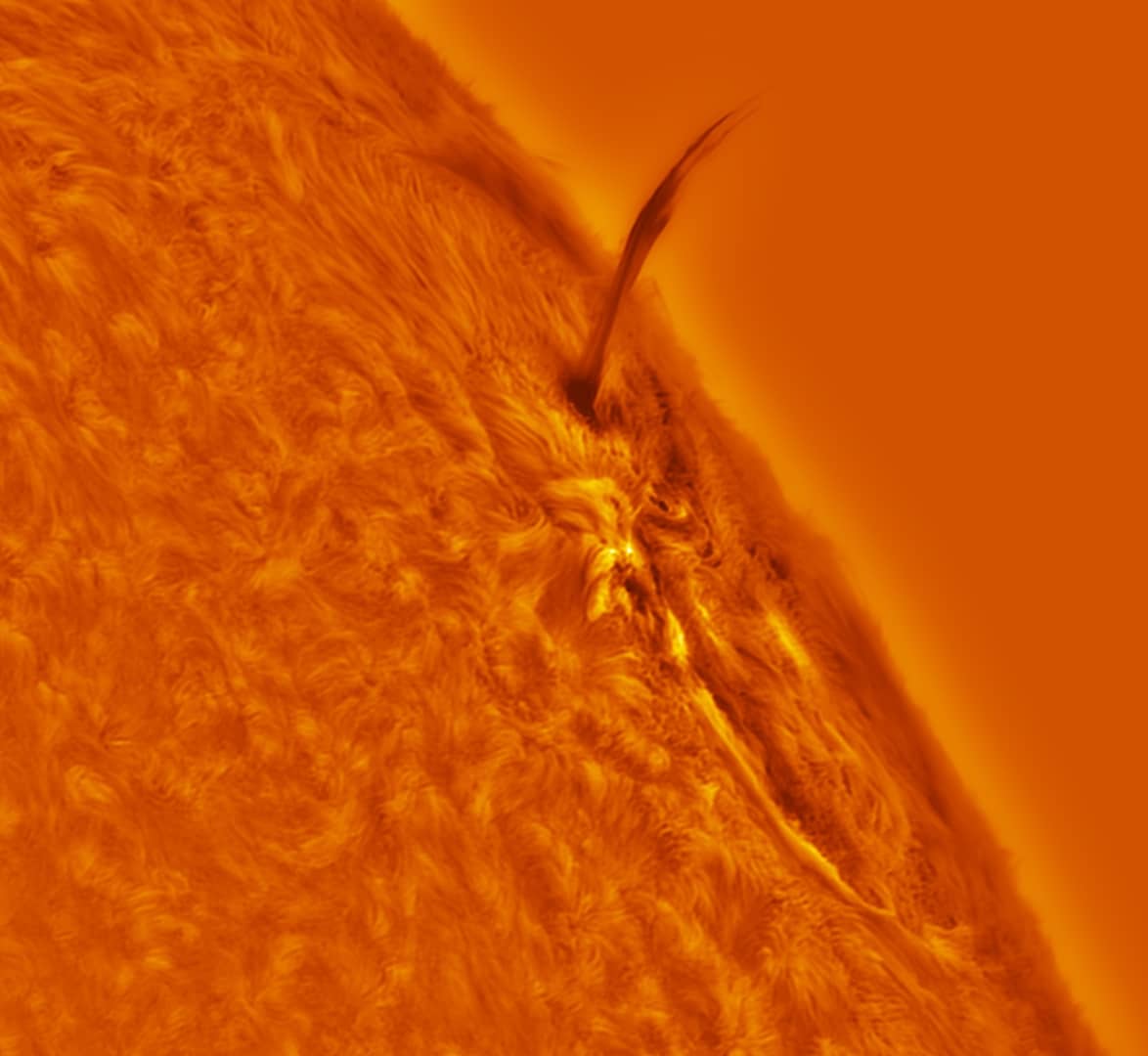
“Colored Eruptive Prominence” by Stuart Green (UK). Runner-Up, Our Sun.
In this image the photographer managed to capture an eruptive prominence just hours after this active region produced a massive X9.0 class solar flare. Close to the solar limb and presented here in an inverted format (black to white) and color enhanced to create a warm sunny glow, the photograph showcases the beautiful 3D structure within the hydrogen chromosphere. Captured in hydrogen alpha light at 656.3nm, the photographer used a 150mm solar telescope and monochrome machine vision camera to record a video sequence which was stacked to bring out the fine details and image processing techniques to produce color and a backlit effect in order to enhance the spicule features around the solar limb. Preston, Lancashire, UK, 9 September 2017.
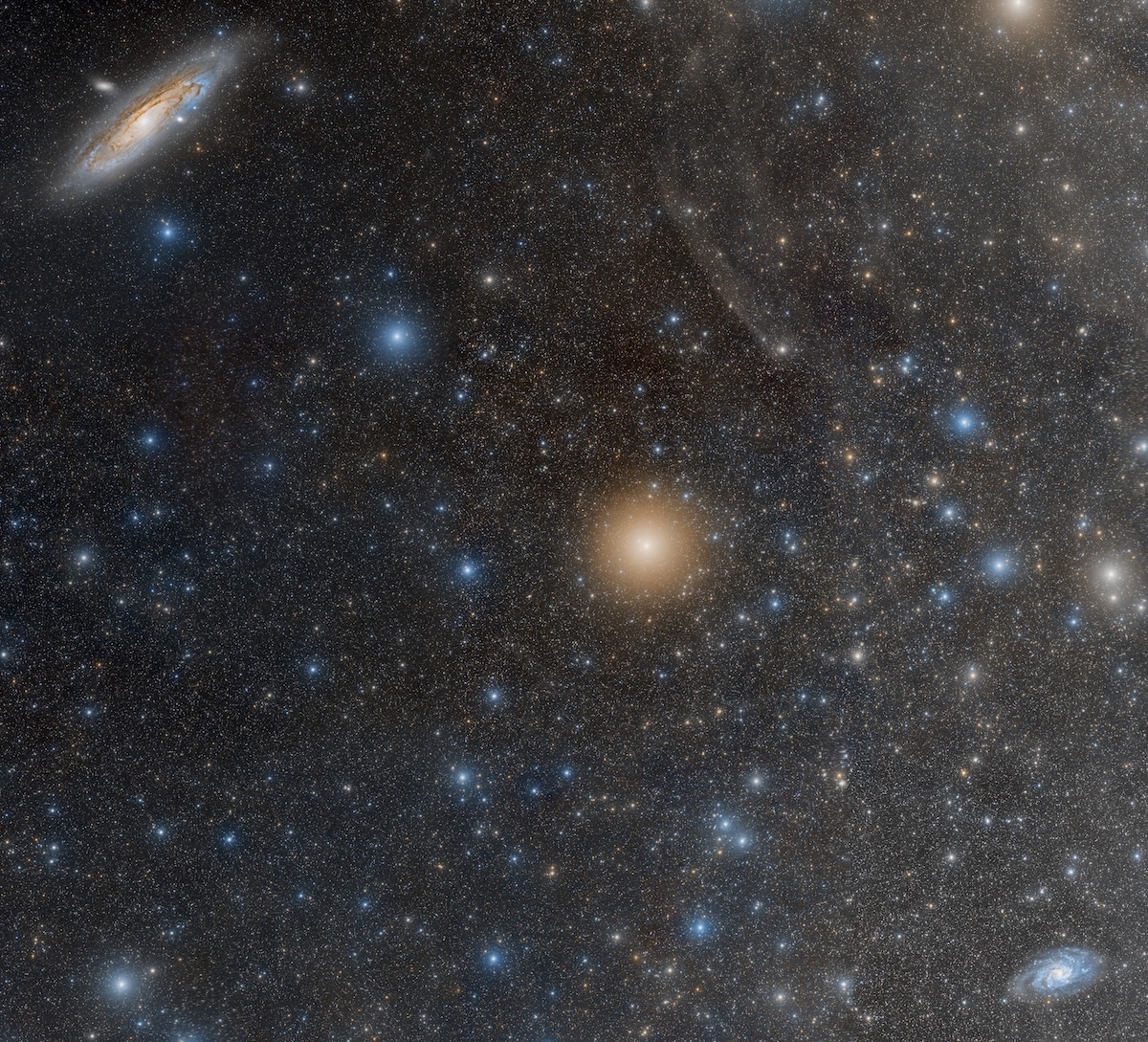
“From Mirach” by Raul Villaverde Fraile (Spain). Runner-Up, Galaxies.
This photograph is a mosaic of 24 images and depicts how the galaxies Messier 31 and Messier 33 appear symmetrically on either side of the star Mirach. Despite being the two galaxies closest to our own, they are still significantly further away from us than Mirach, which is a star within our own Milky Way. We can also see the two smaller satellite galaxies of M31, M32 and M110.
Ocentejo, Castilla-La Mancha, Spain, 14 November 2017. Takahashi FSQ 106ED telescope, Idas lps 2-inch lens, SkyWatcher Nq6pro mount, Canon 6D camera, 414-mm f/3.9 lens, ISO 1600, 24x30x400″ exposure.











































































